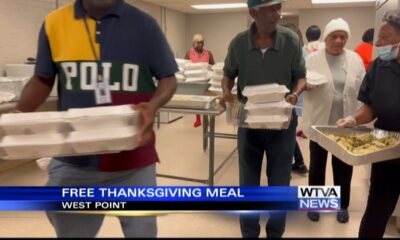Kaiser Health News
The Chicken and Egg Problem of Fighting Another Flu Pandemic
Arthur Allen
Fri, 31 May 2024 09:00:00 +0000
Even a peep of news about a new flu pandemic is enough to set scientists clucking about eggs.
They worried about them in 2005, and in 2009, and they’re worrying now. That’s because millions of fertilized hen eggs are still the main ingredient in making vaccines that, hopefully, will protect people against the outbreak of a new flu strain.
“It’s almost comical to be using a 1940s technology for a 21st-century pandemic,” said Rick Bright, who led the Health and Human Services Department’s Biomedical Advanced Research and Development Authority (BARDA) during the Trump administration.
It’s not so funny, he said, when the currently stockpiled formulation against the H5N1 bird flu virus requires two shots and a whopping 90 micrograms of antigen, yet provides just middling immunity. “For the U.S. alone, it would take hens laying 900,000 eggs every single day for nine months,” Bright said.
And that’s only if the chickens don’t get infected.
The spread of an avian flu virus has decimated flocks of birds (and killed barn cats and other mammals). Cattle in at least nine states and at least three people in the U.S. have been infected, enough to bring public health attention once again to the potential for a global pandemic.
As of May 30, the only confirmed human cases of infection were dairy workers in Texas and Michigan, who experienced eye irritation. Two quickly recovered, while the third developed respiratory symptoms and was being treated with an antiviral drug at home. The virus’s spread into multiple species over a vast geographic area, however, raises the threat that further mutations could create a virus that spreads from human to human through airborne transmission.
If they do, prevention starts with the egg.
To make raw material for an influenza vaccine, virus is grown in millions of fertilized eggs. Sometimes it doesn’t grow well, or it mutates to a degree that the vaccine product stimulates antibodies that don’t neutralize the virus — or the wild virus mutates to an extent that the vaccine doesn’t work against it. And there’s always the frightening prospect that wild birds could carry the virus into the henhouses needed in vaccine production.
“Once those roosters and hens go down, you have no vaccine,” Bright said.
Since 2009, when an H1N1 swine flu pandemic swept around the world before vaccine production could get off the ground, researchers and governments have been looking for alternatives. Billions of dollars have been invested into vaccines produced in mammalian and insect cell lines that don’t pose the same risks as egg-based shots.
“Everyone knows the cell-based vaccines are better, more immunogenic, and offer better production,” said Amesh Adalja, an infectious disease specialist at Johns Hopkins University’s Center for Health Security. “But they are handicapped because of the clout of egg-based manufacturing.”
The companies that make the cell-based influenza vaccines, CSL Seqirus and Sanofi, also have billions invested in egg-based production lines that they aren’t eager to replace. And it’s hard to blame them, said Nicole Lurie, HHS’ assistant secretary for preparedness and response under President Barack Obama who is now an executive director of CEPI, the global epidemic-fighting nonprofit.
“Most vaccine companies that responded to an epidemic — Ebola, Zika, covid — ended up losing a lot of money on it,” Lurie said.
Exceptions were the mRNA vaccines created for covid, although even Pfizer and Moderna have had to destroy hundreds of millions of doses of unwanted vaccine as public interest waned.
Pfizer and Moderna are testing seasonal influenza vaccines made with mRNA, and the government is soliciting bids for mRNA pandemic flu vaccines, said David Boucher, director of infectious disease preparedness at HHS’ Administration for Strategic Preparedness and Response.
Bright, whose agency invested a billion dollars in a cell-based flu vaccine factory in Holly Springs, North Carolina, said there’s “no way in hell we can fight an H5N1 pandemic with an egg-based vaccine.” But for now, there’s little choice.
BARDA has stockpiled hundreds of thousands of doses of an H5N1-strain vaccine that stimulates the creation of antibodies that appear to neutralize the virus now circulating. It could produce millions more doses of the vaccine within weeks and up to 100 million doses in five months, Boucher told KFF Health News.
But the vaccines currently in the national stockpile are not a perfect match for the strain in question. Even with two shots containing six times as much vaccine substance as typical flu shots, the stockpiled vaccines were only partly effective against strains of the virus that circulated when those vaccines were made, Adalja said.
However, BARDA is currently supporting two clinical trials with a candidate vaccine virus that “is a good match for what we’ve found in cows,” Boucher said.
Flu vaccine makers are just starting to prepare this fall’s shots but, eventually, the federal government could request production be switched to a pandemic-targeted strain.
“We don’t have the capacity to do both,” Adalja said.
For now, ASPR has a stockpile of bulk pandemic vaccine and has identified manufacturing sites where 4.8 million doses could be bottled and finished without stopping production of seasonal flu vaccine, ASPR chief Dawn O’Connell said on May 22. U.S. officials began trying to diversify away from egg-based vaccines in 2005, when avian flu first gripped the world, and with added vigor after the 2009 fiasco. But “with the resources we have available, we get the best bang for our buck and best value to U.S. taxpayers when we leverage the seasonal infrastructure, and that’s still mostly egg-based,” Boucher said.
Flu vaccine companies “have a system that works well right now to accomplish their objectives in manufacturing the seasonal vaccine,” he said. And without a financial incentive, “we are going to be here with eggs for a while, I think.”
——————————
By: Arthur Allen
Title: The Chicken and Egg Problem of Fighting Another Flu Pandemic
Sourced From: kffhealthnews.org/news/article/bird-flu-potential-pandemic-vaccine-chicken-egg-quandary/
Published Date: Fri, 31 May 2024 09:00:00 +0000
Did you miss our previous article…
https://www.biloxinewsevents.com/after-grilling-an-nih-scientist-over-covid-emails-congress-turns-to-anthony-fauci/
Kaiser Health News
Pay First, Deliver Later: Some Women Are Being Asked To Prepay for Their Baby
SUMMARY: Kathleen Clark faced an unexpected $960 prepayment request from her OB-GYN during her pregnancy, a practice increasingly reported by pregnant women. Often, these upfront fees occur before the pregnancy concludes, creating financial strain and anxiety. Advocacy groups criticize this as unethical, arguing it can deter women from seeking necessary care. Although providers claim prepayments ensure compensation, the approach complicates billing and may force unwanted decisions on patients. With U.S. maternity care costs averaging nearly $3,000 out-of-pocket, many families struggle financially, raising concerns about equitable access to prenatal services. The issue remains challenging to regulate due to industry lobbying.
The post Pay First, Deliver Later: Some Women Are Being Asked To Prepay for Their Baby appeared first on kffhealthnews.org
Kaiser Health News
As California Taps Pandemic Stockpile for Bird Flu, Officials Keep Close Eye on Spending
SUMMARY: California is using state and federal stockpiles to provide up to 10,000 farmworkers with safety gear as the state reports 21 human cases of bird flu. The state began distributing protective equipment in May and has confirmed bird flu at over 270 dairies. Drawing lessons from the COVID-19 pandemic, California is improving emergency responses and maintaining a stockpile that includes millions of face masks. However, due to financial constraints, funding for disaster supplies has been cut, and some preparedness programs were reduced or eliminated. A ballot measure to increase pandemic preparedness funding failed after its key financial supporter was convicted.
The post As California Taps Pandemic Stockpile for Bird Flu, Officials Keep Close Eye on Spending appeared first on kffhealthnews.org
Kaiser Health News
After Congress Ended Extra Cash Aid for Families, Communities Tackle Child Poverty Alone
SUMMARY: Dr. Mona Hanna, a pediatrician in Flint, Michigan, is championing the Rx Kids program, a pioneering cash aid initiative that provides $1,500 mid-pregnancy and $500 monthly for a child’s first year to Flint families. Since its January launch, nearly all babies born in Flint are enrolled, aiding parents with essential needs like diapers and food. While Rx Kids aims to reduce poverty and inspire lawmakers and donors, challenges remain for expansion in underserved regions like Michigan’s Upper Peninsula, where substantial private funding is needed. Ongoing efforts seek to raise awareness and secure resources for this impactful program.
The post After Congress Ended Extra Cash Aid for Families, Communities Tackle Child Poverty Alone appeared first on kffhealthnews.org
-

 News from the South - Alabama News Feed5 days ago
News from the South - Alabama News Feed5 days agoCrash involving MPD vehicle
-

 News from the South - Missouri News Feed5 days ago
News from the South - Missouri News Feed5 days agoVeterans honored across Missouri, Illinois for Veterans day
-

 Our Mississippi Home2 days ago
Our Mississippi Home2 days agoCreate Art from Molten Metal: Southern Miss Sculpture to Host Annual Interactive Iron Pour
-

 News from the South - Georgia News Feed5 days ago
News from the South - Georgia News Feed5 days agoWho will serve in Trump’s cabinet? | FOX 5 News
-

 News from the South - Tennessee News Feed5 days ago
News from the South - Tennessee News Feed5 days agoAfternoon Weather (11/11): Dry afternoon ahead
-

 News from the South - Florida News Feed3 days ago
News from the South - Florida News Feed3 days agoTrump taps Matt Gaetz as attorney general, Tulsi Gabbard as Intelligence official | National
-

 Mississippi News Video5 days ago
Mississippi News Video5 days agoGroup continues annual free Thanksgiving meal in West Point
-

 Mississippi News Video5 days ago
Mississippi News Video5 days agoThe War Memorial Building in Jackson





























